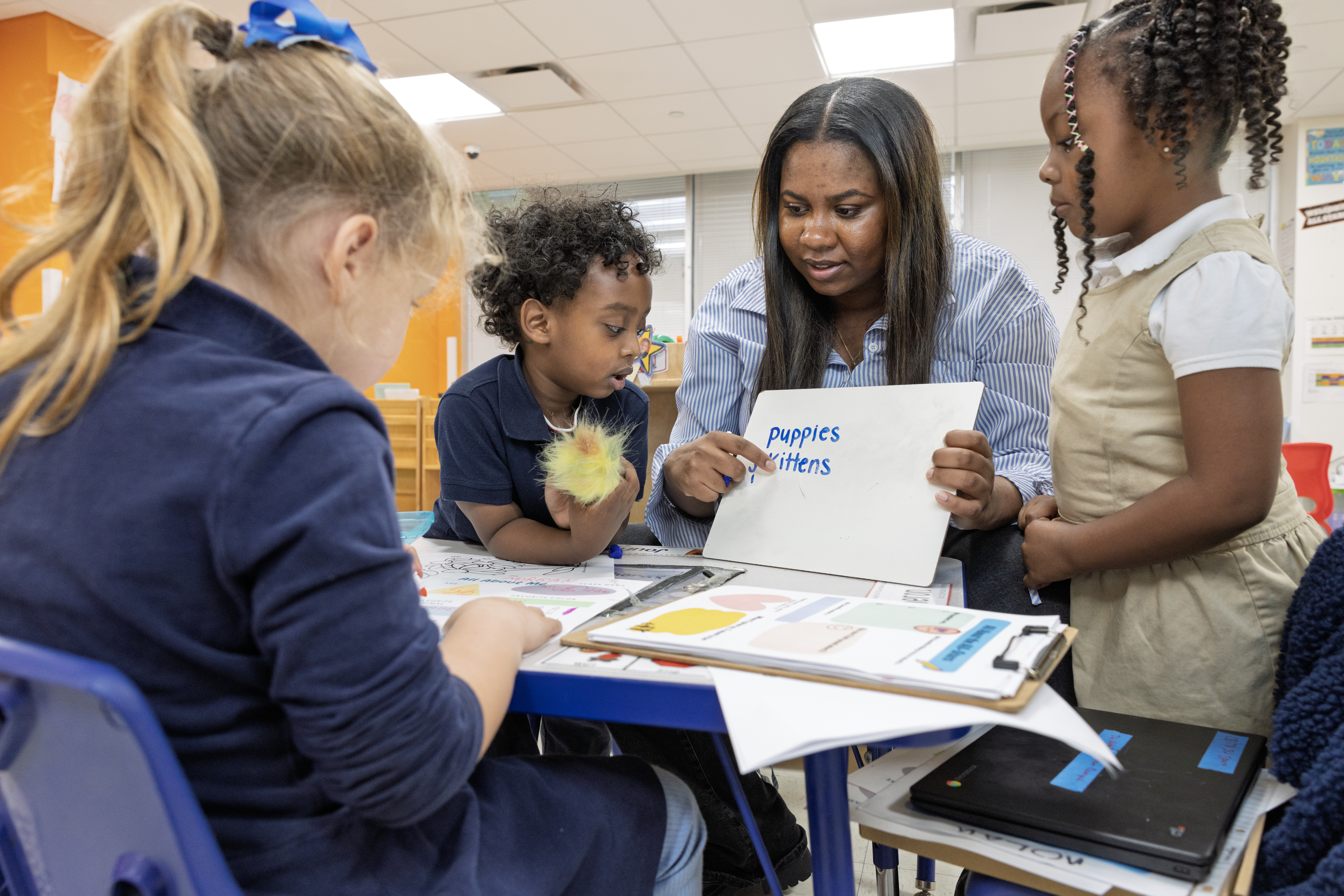The Easiest Shift You Can Make To Improve Challenging Behavior: A Problem Solving Approach
3-minute read • 6 min read • Oct 31, 2025 2:54:21 PM • Written by: Rachel Burley

It's 10:47 AM. Marcus just shoved his math worksheet off his desk—again. Your classroom aide is waiting for your signal. Consequence or conversation? Most of us default to the first. Here's why the second changes everything.
When a student shows challenging behavior, our first instinct is often to add consequences. That can stop a behavior in the moment, but it rarely builds the skills students need to handle the same situation tomorrow. A problem-solving approach is different. It is structured and collaborative. It looks for the why underneath the behavior and builds a plan that strengthens skills, relationships, and classroom routines.
Think of behavior as communication. Every action is telling us something. When teams slow down to listen, gather a little data, and plan together, students make real and lasting progress.
The Iceberg: What We See vs What Is Underneath

You may have seen behavior referred to as an iceberg. We only see the tip of the iceberg in class. Beneath the surface, there are likely factors that are not immediately visible.
- Unmet academic skill needs can show up as task refusal, off-task talk, or sudden bathroom breaks when writing begins.
- Sensory needs can show up as humming, tapping, standing, or leaving the carpet.
- Anxiety or trauma history can show up as perfectionism, avoidance, or quick escalations when a task feels uncertain.
- Social skill gaps can show up as blurting, arguing, or teasing to join peer interactions.
At The Ability Challenge, we believe challenging behavior at school is communication. That's why we teach educators to respond with curiosity, instead of doubling down on consequences. The approach helps teachers think of their role as a problem-solver, enabling them to move from behavior management to behavior understanding.
The Problem-Solving Approach to Behavior
There are four steps to the Problem-Solving Approach:
- Problem Identification: Define the behavior in clear, observable, and measurable terms. Make sure all team members (and when possible, the student) agree on what the problem looks like so you are solving the same issue.
- Problem Analysis: Look beneath the surface to explore why the behavior is happening. Gather data (e.g., ABC data collection, teacher observations, student voice) to identify triggers, patterns, and potential functions of behavior.
- Plan Development: Brainstorm and select realistic solutions. Map out proactive supports, explicit skill-building opportunities, and strategies to prevent the behavior from occurring. Decide on roles, responsibilities, and how progress will be measured.
- Plan Implementation & Analysis: Put the plan into action with consistency. Collect data on what’s working, what needs adjusting, and how the student is responding.
Why The Problem-Solving Approach Works
Moving from a punitive approach to one focused on problem-solving has many advantages:
- Focus on skill building: You are teaching the missing skills that underlie the behavior rather than trying to stop it through bigger consequences.
- Empowerment: Students help choose solutions and practice them. That builds agency and cooperation.
- Relationship-focused: Working together reduces power struggles and strengthens trust.
- Durable change: Skills, routines, and clarity travel with the student from class to class and year to year.

Use Data To Find The Why
A simple protocol like an ABC data collection sheet helps the team identify patterns in a student’s behavior.
- A is for Antecedent: What happened right before the behavior? Time, task, peers, adult prompt, location.
- B is for Behavior: What did you observe in clear terms? No labels. No guesses.
- C is for Consequence: What happened right after? Attention from peers or adults. Work removed or delayed. Access to a preferred item or activity. A sensory change, like quiet or movement.
 Connect ABCs To The Four Functions
Connect ABCs To The Four FunctionsMost classroom behaviors can be traced back to one or more of these four functions of behavior.
- Attention: The behavior results in attention from peers or adults.
- What we see: Marcus shoves his worksheet and the class erupts - all eyes on Marcus.
- What we miss: Marcus gets more peer and adult attention in those 30 seconds than he got all morning during quiet work time. The worksheet hitting the floor? That's his most reliable way to feel connected.
- Escape: The behavior delays or avoids a task or situation.
- What we see: Marcus shoves his worksheet and he gets sent out of the room.
- What we miss: He can't decode 60% of the words on it.
- Access to tangibles: The behavior gains a preferred item, activity, or privilege.
- What we see: Marcus shoves his worksheet the moment he sees the teaching assistant bring out the bin of pattern blocks for a small group. He's not in that group.
- What we miss: After the disruption, the teacher sometimes says, "Fine, Marcus, you can come over and work with me at this table." Marcus wants those blocks.
- Automatic or sensory: The behavior produces internal reinforcement.
- What we see: Marcus shoves his worksheet. No one reacts much anymore—they're used to it. He gets up, walks around, cracks his knuckles, and leaves class.
- What we miss: Marcus's body needs movement after sitting at his desk for 48 minutes straight. The physical act of shoving the paper, bending to pick it up, and leaving gives him the sensory input he's craving. It's not about the worksheet at all—it's about his nervous system needing a reset.
Stop playing behavior detective. Let the data do the talking. Once you understand the function, you can design a response that teaches a replacement behavior and aligns the environment so the new behavior sticks.
Consequences alone don't work because they don’t solve the problem. If you take away Marcus's recess (consequence) but he's shoving papers because he can't read them (escape function), you will likely continue to see those behaviors escalate when Marcus is faced with reading tasks. And you've just punished him for struggling.
By uncovering the “why” and responding with intention, we help students not only change behavior but also build the tools they need for long-term success.

Check Out ABC’s Downloadable Tools to Support Your Teams!
- Download the ABC Data Collection Sheet → Start uncovering patterns in your classroom this week
- Download the Functions of Behavior Flashcards → Perfect for your next team meeting
Interested in learning more?
Join Our Next FREE Webinar High Leverage Practices for Supporting Challenging Behavior
November 6 | 12:00 PM Eastern
Register HERE.
Want to dive deeper? Download our full toolkit, "Building Schools Where All Students Thrive," documenting how four DC charter schools transformed their special education systems. Available at www.theabilitychallenge.org/resourcecenter.
Want to learn more?
Rachel Burley
Our Latest
Related Articles

September 24, 2025 | 3-minute read
5 Back-to-School Mistakes Sabotaging Your Special Education Program
Avoid the 5 costly mistakes that derail special education programs every September. Learn how succes...

August 28, 2025 |
New School Year, New Tools for Success: The THRIVE Systems Leadership Cohort Toolkit
Transform your school's approach to special education with the THRIVE Systems Leadership Cohort Tool...

March 17, 2025 | Impact
2024: ABC's Best Year Yet
Discover how The Ability Challenge helped over 22,000 students with disabilities thrive through incl...

